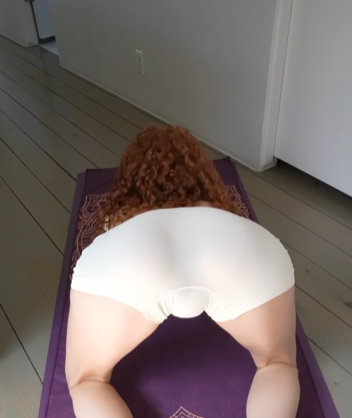
The supine spinal twist, also known as Supta Matsyendrasana in Sanskrit, is a simple yet deeply beneficial yoga pose that has stood the test of time. Practiced by yogis, athletes, and individuals seeking relief from tension and stress, this pose offers a unique blend of relaxation, spinal mobility, and internal detoxification. It is often performed at the end of a yoga session or workout as a way to unwind and bring the body back into balance. Though it appears deceptively easy, the supine spinal twist can unlock profound healing for the body and mind when done with intention and care.
What Is the Supine Spinal Twist?
The supine spinal twist is a reclining yoga posture that gently rotates the spine while lying on your back. It involves bringing one knee across the body while the shoulders remain grounded, allowing the spine to twist and the muscles around it to relax. The position not only massages the spine but also encourages deep breathing, which calms the nervous system and promotes a sense of peace and restoration.
How to Perform the Supine Spinal Twist
Here is a step-by-step guide to practicing this pose correctly:
- Start by lying on your back on a comfortable mat or surface. Extend your legs and rest your arms at your sides, palms facing up.
- Bend your right knee and bring it in toward your chest, keeping your left leg extended on the floor.
- Use your left hand to gently guide your right knee across your body toward the left side. Try to keep your right shoulder in contact with the mat as much as possible.
- Extend your right arm out to the side at shoulder height, palm facing up. Turn your head to look at your right hand, if comfortable.
- Relax and breathe deeply into your belly and chest. Hold the pose for 30 seconds to 2 minutes, or longer if desired.
- To release, bring the knee back to center and straighten the leg. Repeat on the other side.

Physical Benefits of the Supine Spinal Twist
This gentle twist may appear passive, but its benefits are wide-ranging and impactful. Here are several ways your body benefits from regular practice:
1. Improves Spinal Mobility
One of the most noticeable benefits of the supine spinal twist is its impact on the spine. By gently rotating the spine, this pose helps increase flexibility in the vertebrae and surrounding muscles. Over time, this can improve posture, relieve stiffness, and reduce the risk of back injuries.
2. Relieves Lower Back Pain
Lower back discomfort is a common complaint, especially for people who sit for long periods or have poor posture. This pose helps stretch the lower back muscles, releasing tension and reducing pain. Many people report immediate relief after just a few minutes in this position.
3. Aids Digestion and Detoxification
Twisting poses, including the supine spinal twist, are believed to aid digestion by stimulating the abdominal organs. The gentle compression and release pattern can massage the intestines and support detoxification, encouraging healthy bowel movements and reducing bloating.
4. Enhances Hip Flexibility
As the knee crosses the body, the pose also stretches the outer hips and glutes. This is especially helpful for runners, cyclists, and anyone who experiences tightness in the hip region.
5. Calms the Nervous System
The deep breathing encouraged in this pose activates the parasympathetic nervous system, also known as the “rest and digest” system. This leads to a decrease in stress hormones and an increase in relaxation, making it ideal before sleep or after a stressful day.
Mental and Emotional Benefits
The physical effects of the supine spinal twist are matched by its mental and emotional rewards. Practicing this pose regularly can:
- Promote mindfulness: The stillness of the posture and the focus on the breath encourage present-moment awareness.
- Reduce anxiety: The gentle pressure on the abdomen can create a grounding feeling, helping to reduce anxious thoughts.
- Improve sleep: Practicing before bedtime can signal the body that it’s time to wind down, supporting a deeper, more restful sleep.
- Enhance emotional release: The twist can unlock stored tension, both physical and emotional, allowing feelings to surface and be released naturally.

Variations and Modifications
The beauty of the supine spinal twist lies in its adaptability. Here are a few variations to suit different needs:
- Use a bolster or pillow under the crossed knee for support if the stretch is too intense or the knee doesn’t reach the floor.
- Both knees bent: For a gentler version, bend both knees and let them fall to one side together, keeping shoulders grounded.
- Extended leg twist: Straighten the top leg for a deeper twist and hamstring stretch, but only if you have sufficient flexibility.
- Arms in cactus position: Instead of extending the arms straight, bend the elbows to form a cactus shape for a different shoulder opening.
Common Mistakes to Avoid
While the pose is accessible, a few key points should be kept in mind:
- Don’t force the knee to the floor. Let gravity do the work and use props if needed.
- Keep your shoulders down. Lifting the shoulder to deepen the twist can cause strain.
- Avoid holding your breath. Keep the breath flowing smoothly to deepen relaxation.
- Listen to your body. Any sharp or pinching pain is a sign to ease out of the twist.
When to Avoid the Supine Spinal Twist
Although generally safe, there are cases when this pose should be avoided or modified:
- Pregnancy: Twisting should be approached with caution or avoided entirely, especially in the later stages.
- Recent spinal injuries or surgeries: Always consult a healthcare provider before doing any twist.
- Severe back pain or herniated discs: Practice under the guidance of a qualified instructor or therapist.
Incorporating It into Your Routine
You don’t have to be a yoga enthusiast to benefit from the supine spinal twist. Here’s how to integrate it into your daily routine:
- At the end of a workout: Helps reduce muscle soreness and encourages recovery.
- Before bed: Calms the mind and body for a better night’s rest.
- During stressful moments: Just a few minutes in this pose can center you.
- First thing in the morning: Gently awakens the spine and gets blood flowing.

Final Thoughts
The supine spinal twist is a gentle invitation to slow down and listen to your body. In a world that often emphasizes speed and productivity, this pose offers a chance to pause, breathe, and reconnect with yourself. Whether you practice it for physical relief, emotional release, or simply as a moment of stillness, the benefits are accessible to all.
By embracing this posture regularly, you give your spine the gift of mobility, your organs the support of detox, and your mind the rest it craves. All you need is a mat, a quiet space, and a few minutes to experience the calming magic of the supine spinal twist.



